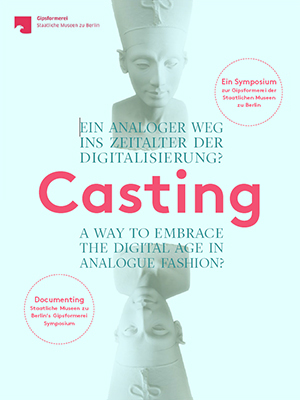
How to Cite
License

This work is licensed under a Creative Commons Attribution-ShareAlike 4.0 International License.
Identifiers
Published
Casting. A way to embrace the digital age in analogue fashion?
A symposium on the Gipsformerei of the Staatlichen Museen zu Berlin
The Gipsformerei, the oldest establishment of the Staatlichen Museen zu Berlin still active today, will be celebrating its 200th anniversary in a few years time. The Gipsformerei’s forthcoming anniversary is a welcome opportunity for us to address the following question: How can an institution whose core activity lies in traditional handcrafted production hold its own in the face of technical innovation? The publication addresses that question and adds an interesting cross-section on the current research debate. Besides all the papers presented at the symposium the panel discussion and the final discussion are summarized in English and German at the end of the production.
View this volume as interaktive version direktly in the browser.
2. revised edition: https://doi.org/10.11588/arthistoricum.536






